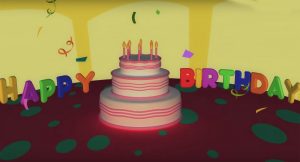‘Critical Thinking’ is required to improve your dance.
Honest.
Dispassionate.
With extreme prejudice.
First and foremost, what is ‘Critical Thinking’. Webster’s Dictionary defines it as: “the objective analysis and evaluation of an issue in order to form a judgment”, and that’s just about right. However, when we apply this to Argentine Tango the definition gets even more refined:
“the objective analysis of one’s movement, foundation, vocabulary, and musical interpretation, as well as the evaluation of an area of concern in order to form a point of reference towards changing something, or how something is done to make it visually appealing, and/or kinesthetically desirable from a physiological perspective.”
This is Critical Thinking as it regards Argentine Tango.
But what does any of that actually mean ?
First and foremost it means that you must look at, and then slow down what you are doing, using video to review, then analyze your dance from every aspect, your walk, your turns, your embrace, your posture, your head position, your hand positions, your fingers, how you’re placing your feet on the floor, how they’re landing on the floor, what part of the foot you’re landing on (not just heel or toe), are you stable, are you balanced, are you hanging, are you pushing, are you pulling, are you compressing, are you using or employing force, tension, and/or resistance ? Secondly it means that your internal analysis must be honest, and without prejudice towards you thinking that you’re doing better. There is always a bit more that you could be doing. And lastly, This is really about self-honesty. If you end up feeding yourself a delusion of where you’re really at then you’re defeating the whole purpose of study in the first place.
Truthfully this is asking questions and seeking answers. It is only through the detailed examination, as hard as it may be, as honest as it may be, that you can and must change your dance. This is only a piece of critical thinking. The part that most people hear in those questions above is the criticism. That is not critical thinking. Critical Thinking requires self-criticism. It requires that you show up, look at what you’re doing and say “Is all that there is ? Can I be doing this better ? More economically ? More effortlessly ? Am I pushing too hard, am I pushing ? Am I compressing ? Am I stable ?”. Note that this is all focused on the self, and NOT the partnership. It’s not blaming or shaming or directing the areas of concern at anyone else except yourself. Critical thinking requires a deep analysis of your skill set and then actively seeking a better way to accomplish the same goals without so much damned body contortion or work. If there’s pain, and/or pressure of any kind, then that’s less than desirable.











